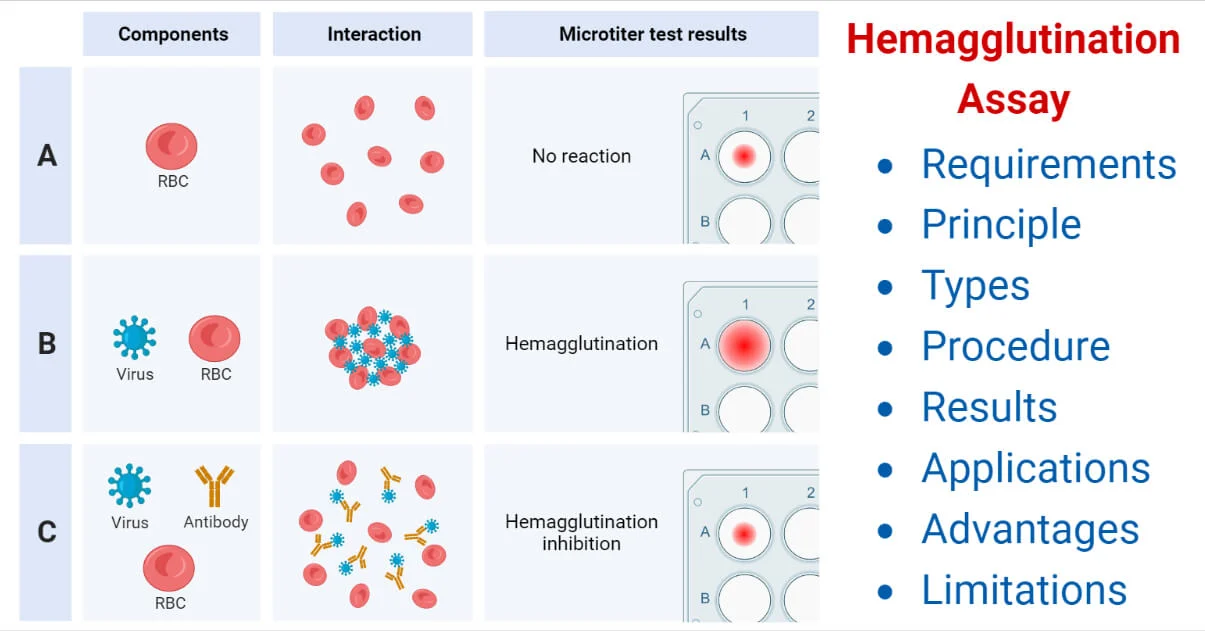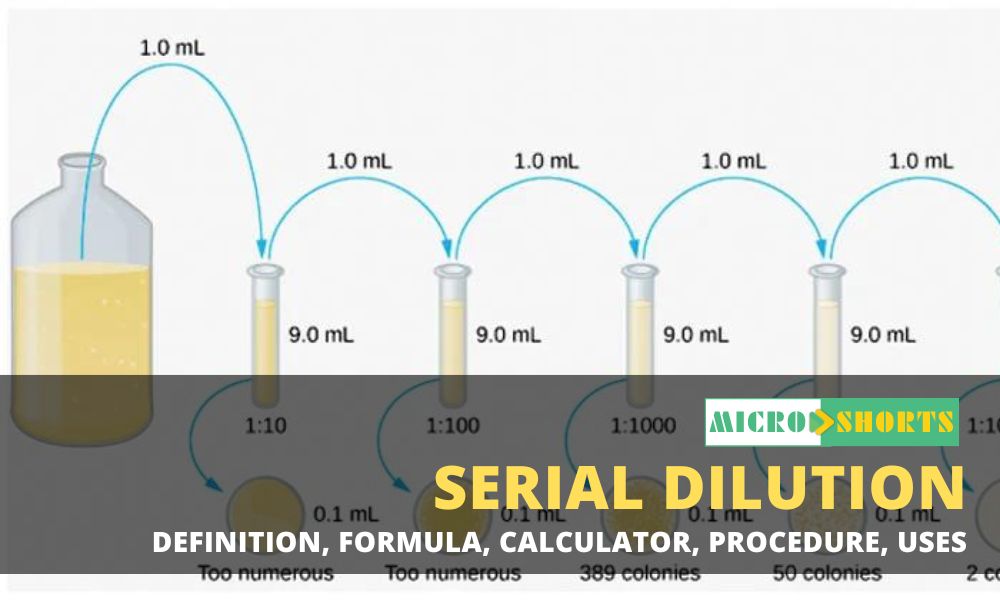Introduction
The antigen and antibody reaction in which the antigen-antibody complex formed is visible in the form of clumps is called agglutination.
It occurs on the surface of the cells or components involved
as antigens are expressed on their surface. It occurs between insoluble
antigens and soluble antibodies.
Agglutination reaction is of two types:
- Direct
agglutination: It includes slide agglutination, tube agglutination, coombs’
test, and heterophile agglutination test.
- Passive
agglutination: It includes latex agglutination,
hemagglutination test and, cooaglutination test.
Hemagglutination is a type of passive agglutination
reaction.
Hemagglutination assay (HA) is a type of immunoassay in
which erythrocytes are used as carrier particles and are commonly preferred for
serological diagnosis of various infections.
George Hirst was the person to discover hemagglutination
tests. He was an American virologist.
Requirements
- RBC
suspension: It is coated with antigens specific to the antibody to be
detected or antibodies specific to antigens to be detected; hence called a
carrier particle. RBCs can be of humans, sheep, chicks, etc.
- Serum
or blood sample
- Microtitre
plates such as 96 well-microtitre (V-bottomed) plate
- Diluent:
Phosphate Buffered Saline (PBS)
- Negative
and Positive Control Samples
- RDT
kits (generally with slides, reagents, and control) are available in case
of Rapid Hemagglutination assay
Principle of Hemagglutination Assay
The primary theme of the hemagglutination test is that when
any antigens present
on the surface of Red Blood Cells come in contact with any complementary antibody and vice-versa, they
combine to agglutinate and form noticeable clumps, which can be observed
clearly distinguishing the positive test from the negative one.
Types of Hemagglutination Assay
It is of mainly two types based on the methodology:
A. Rapid Hemagglutination Assay
As the name suggests, in around one minute, this test can
determine the presence of a haemagglutinating agent. Hence, it can also be
called Rapid Diagnosis Test (RDT). The negative and positive control samples
must be tested only once when testing multiple samples.
Whenever a haemagglutination test is performed, the
settling pattern of the red blood cell suspension must be tested. This is done
by combining diluent with red blood cells and allowing them to settle.
- The diluent should be dispensed.
- Add red blood cells and gently shake them to combine.
- Allow the red blood cells to settle before examining
the pattern
- Examine the cells to see if they are setting in a normal
pattern and have no auto-agglutination. In the micro-agglutination assay, there
will be a distinct button of cells and an even suspension with no signs of
clumping in the rapid assay.
Procedure of Rapid Hemagglutination Assay
- Place
four separate drops of 10% chicken red blood cells on a glass slide or the
provided one in the kit.
- Add
one drop of each control and test sample to each drop of blood along with
PBS. To dispense each sample, use separate tips, pipettes, or a flamed
loop.
- At
first, PBS is dropped, followed by control and unidentified samples.
- It
should be mixed for one minute by rotating the slide or tile.
- Observe
the result and compare it with the positive and negative control provided
in the kit to analyze the result.
B. Micro-hemagglutination Assay
This method is useful for testing the presence or absence of
haemagglutinin in allantoic fluid from many embryonated eggs. It is a more
time-consuming method than RDT. Red blood cells are dissolved in a 1% solution.
Cells settle faster in V-bottom plates, and the slight difference between
positive and negative results is greater than in U-bottom plates.
Procedure of Micro-hemagglutination Assay
- Fill
out a recording sheet with information about the samples being tested. The
samples and controls will be placed in the wells indicated on this sheet.
- Take
the sample of about 50 ml with a micropipette and dispense it into a well
of the microwell plate. Use a different tip for each sample to prevent
contamination of samples.
- Place
negative and positive controls on one of the plates.
- Pour
50 mL of PBS into each well. These wells will serve as auto-agglutination
controls for red blood cells.
- Fill
each well with 25 mL of 1% red blood cells.
- Gently
tap the plate’s sides to mix. Cover the plate with a plate cover.
- Let
the plate stand for about 40 minutes, and observe/record the data.
Result Interpretation of Hemagglutination Assay
The appearance of clumps in the case of agglutinated
suspension can indicate a positive test in all tests. It can be compared with
the positive control set to analyze properly. A positive test suggests that the
respective sample is contaminated with antibodies or antigens related to a
pathogen.
Note: The clumps can be observed at the bottom of the well in the case of Micro-well and on the surface in the case of RDT.

Applications of Hemagglutination Assay
- It
can be used to detect the humoral immune response of the body against any
disease or infective agents.
- It
can be used for determining different blood cell types or groups.
- It
can detect and quantify viral infections such as paramyxovirus, influenza,
etc.
- Different
rapid diagnosis test kits based on hemagglutination are designed. For e.g.
an RDT kit for detecting HbsAg in case of Hepatitis B infection.
- It
can also detect various bacterial infections, such as syphilis.
Advantages of Hemagglutination Assay
- Simple
to perform
- Not
as expensive as many other tests
- Types
of equipment used are generally easily available.
- Fast
interpretation of results (as in the case of RDT)
Limitations of Hemagglutination Assay
Faults in incubation time and concentration of RBC may lead
to wrong results.
Different factors considered in the reaction must be
specific. Their non-specificity may result in an incorrect result.
Determination of quantitative values and result
interpretation require qualified individuals.
Result interpretation is made manually without any digital
data, so the different observers might have errors or fluctuations in analysis.









Comments